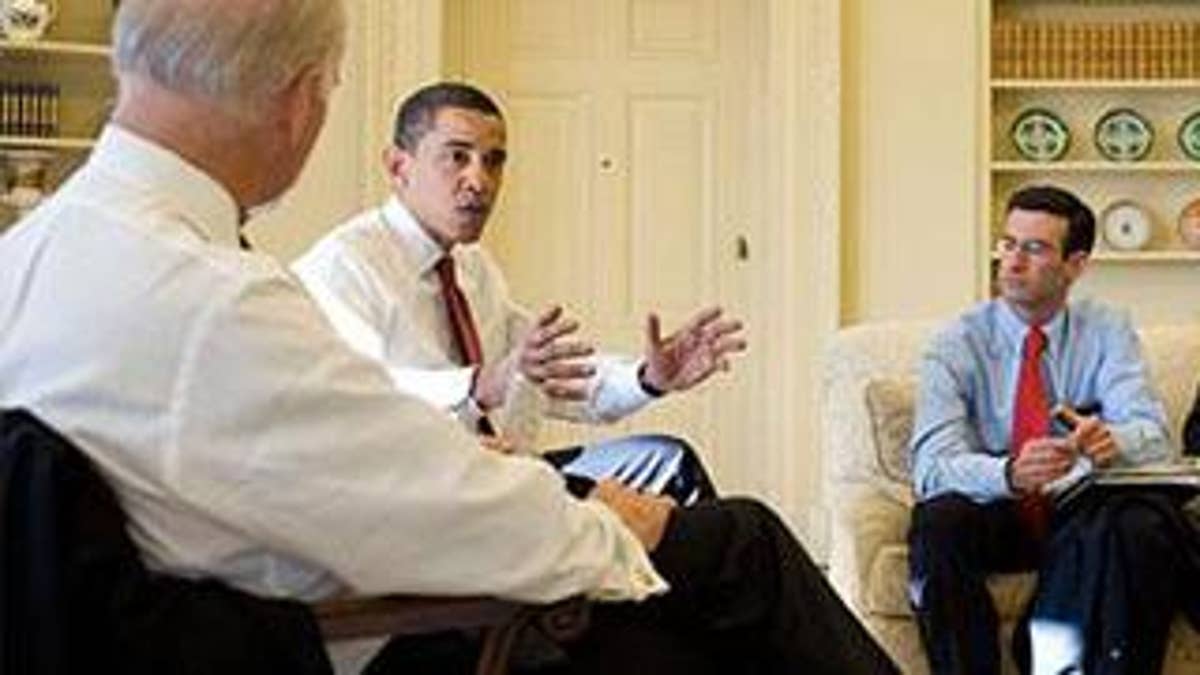
President Obama lectured voters during the campaign about the need to make sacrifices for the environment. But now it's warm and toasty in the White House -- so much so that aides have likened it to a tropical hot house -- and Obama is under fire for turning up the heat.
Obama made climate change a staple of his stump speech last year, calling on Americans to lower their energy use and set a model for the rest of the world in combating climate change.
During a campaign event in Oregon in May, Obama said we have to "lead by example." "We can't drive our SUVs and eat as much as we want and keep our homes on 72 degrees at all times," he said.
"That's not leadership. That's not going to happen."
But for the first few weeks of his presidency, that's precisely what has happened in the White House.
On the first day of his presidency, Obama allowed staffers to venture into the Oval Office without wearing coat and tie, which had been obligatory under President Bush. Fashion observers called it a new age of business casual at the White House.
Obama's aides had a simpler explanation. Though he's spent more than 20 years in Chicago, the president was born in Hawaii. And so he "likes it warm" in the Oval Office, said Chief of Staff David Axelrod. "You could grow orchids in there," he told the New York Times.
But while it's perpetual summer in the Oval Office, the rest of the country has been trudging through a tough winter. Ice storms have cut power to millions in the Midwest and South.
With few orchids growing in the heartland, critics are saying that Obama -- who urged individual sacrifice in an inaugural address that called for a "new era of responsibility" -- hasn't been willing to bear the cold with the rest of the country.
"It's stunning hypocrisy," said Christopher Horner, a senior fellow at the Competitive Enterprise Institute and author of two books critical of global warming activists. "Obama spins the dial up, takes off his coat and seeks to mandate that we turn the dial down," he said.
Obama could take a lesson from one of his predecessors, critics say.
During the gasoline shortage of the 1970s, President Jimmy Carter famously donned a cardigan and turned down the thermostat in the White House. He urged the nation to do the same during a notably chilly fireside chat he gave from his cooled-off home -- a symbolic gesture intended to move other Americans to go easy on the country's depleted stores of energy.
Charles Ebinger, director of the Energy Security Initiative at the Brookings Institute, said that presidential roles and security measures will necessarily prevent Obama from being completely green.
"No one can justify from an energy-efficiency standpoint riding in a bulletproof car, but as president of the United States I think we need to protect his security," he said. "Symbolically it's important, but I wouldn't read too much into it."
The 800-square-foot Oval Office accounts for only a small part of the White House's overall area: at 55,000 square feet, the Georgian mansion is a public institution, and taxpayers cover the cost of powering a building that is part dwelling, part museum and the nerve center of the Executive Branch of the U.S. government.
The White House began going green during the 1990s, and reports from the Department of Energy show that innovations and changes have saved hundreds of thousands of dollars in energy costs each year for the buildings that house White House staff.
Obama's White House declined to comment on the president's personal energy use, but did note that his stimulus package will continue the greening trend, paving the way for 75 percent of federal buildings to be modernized to increase their energy efficiency.
Yet in the sanctum sanctorum of executive power, Obama has kept it steamy -- literally. The entire White House complex is heated by steam radiators, part of an old energy system that continues to undergo renovations.
Critics say it's time for the president to put his coat -- or his cardigan -- back on.
Horner said the president should follow the demands he's made of the rest of the country and start "turning down the dial and putting on a sweater instead of [demanding] sacrifice he talks about for other people."
But some energy experts say Obama, who made energy efficiency a cornerstone of his campaign, needs to stay on message.
"He's got to make every American make a personal commitment" to decrease their own energy use and educate the country about the threat of climate change, he said. "The earlier the president can convey that message the better."




